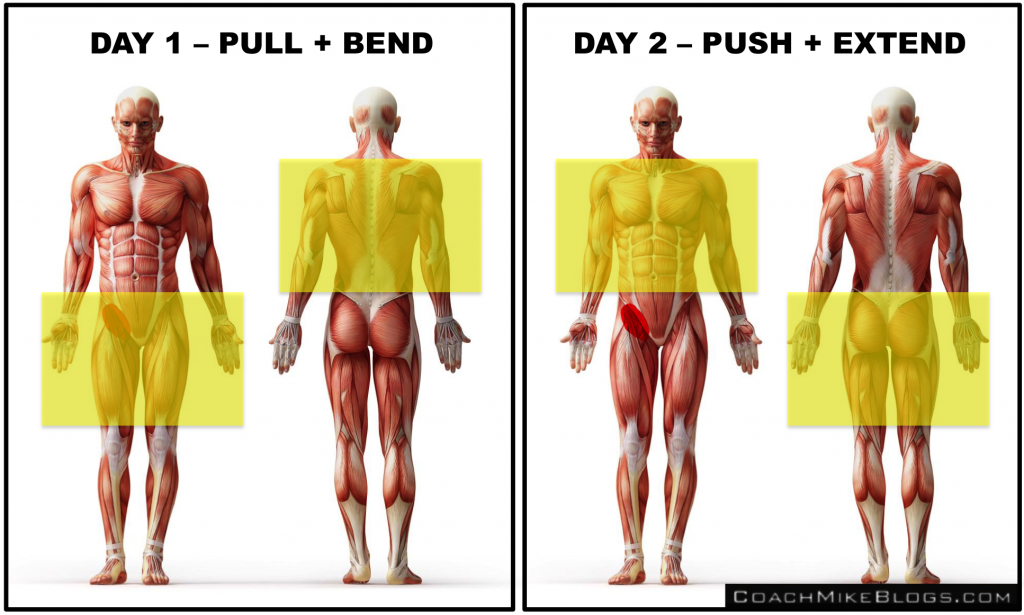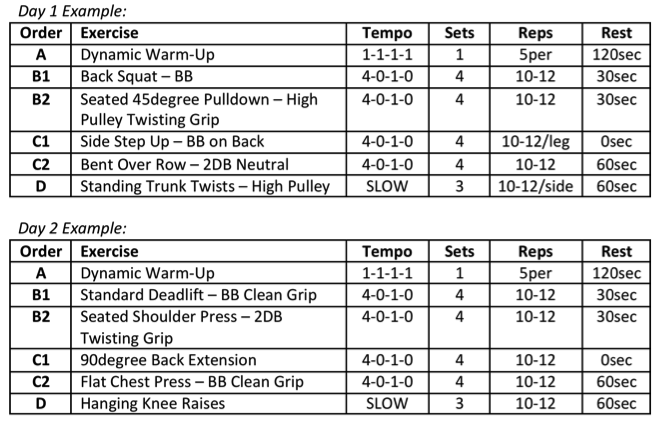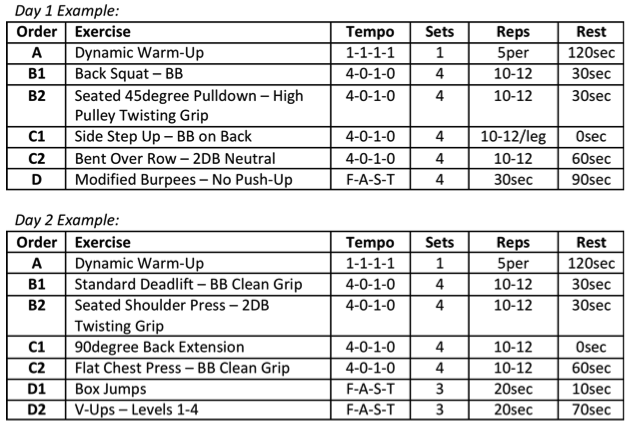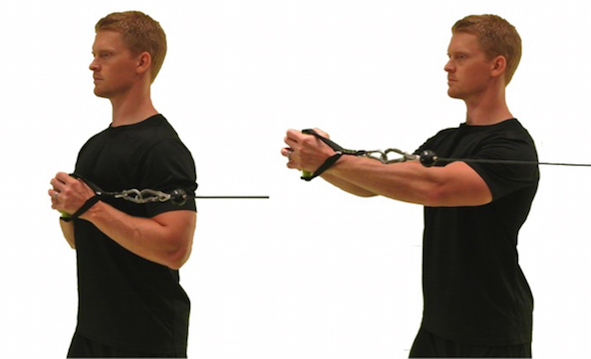Even though the research on optimal loading (weight lifted) is somewhat contradictory, it’s clear that as you gain experience and transition into an advanced lifter, it’s critical that you continue to progress.
For instance:
Strength gains can be achieved at 60% of 1RM for novice lifters, while 80% is required for trained individuals and 85% in athletes.
Meaning, Beginner Bill can make better gains than Advanced Andy without pushing himself as hard.

When we go back to our adaptation discussion, this makes perfect sense. As the muscles that have been exposed to a high level of stress and a variety of different stimuli, need something more significant before they feel they need to adapt.
The ‘need for progression’ increases as training experience increases.
I mention this for two reasons:
- Those that are naturally strong get complacent. They’ve reached a certain bench press or squat, and they’re lifting significantly more than their training partner so they stop seeking progression. When realistically, they should be pushing harder.
- Those with more training experience plateau in muscle development. They get through the non-existent ‘no hypertrophy period’ (mostly strength and neural adaptations) in the first few months as a beginner lifter, they start growing and continue to grow if they’re consistently progressing through challenging workouts, and then they hit somewhat of a muscle-building peak.
Obviously, we don’t want to stop training when this peak occurs, as strength and muscle ‘maintenance’ is important to our long-term health. So instead, we can shake things up with a period of increased volume.
Increase Frequency Not Duration
The set and rep ranges in the 1% Fitness chart put you in the optimal range for building strength and muscle, so we don’t want to mess with them. And short workout durations are extremely important to getting favorable hormonal increases, so we’ll avoid extending the workout length.
Instead, we’ll increase the volume by adding an additional resistance-training session each week. Which is accomplished by splitting the body in half, and dedicating an entire workout (or ‘Day’) to each upper-lower grouping.
Day 1 – Pull/Bend
A1) Bend – A2) Pull; B1) Bend – B2) Pull
Or
A1) Pull – A2) Bend; B1) Pull – B2) Bend
Day 2 – Push /Extend
A1) Extend – A2) Push; B1) Extend – B2) Push
Or
A1) Push – A2) Extend; B1) Push – B2) Extend

Splitting the muscle groups in this manor has been shown to elicit a greater hypertrophic response. More than likely because of the increased volume per muscle group at each session (8 sets vs 4), the ability to hit the same muscle group a 2nd time in one week, and the potential for greater recovery time between workouts compared to full-body training.
In fact one of the largest scientifically sound studies to-date, found that 8 sets per muscle group produced the best improvements in muscle.
And it appears to be the same result for strength. With research from 2013 in the Journal of Strength and Conditioning Research assigning participants to a 6-week resistance training program consisting of 1 set per exercise and 3 sets per muscle group (low-volume), 2 sets per exercise and 6 sets per muscle group (moderate volume), or 3 sets per exercise and 9 sets per muscle group (high-volume), and finding a 17% strength increase in the high-volume (9 set per muscle) group, compared to 2.7 and 3.8% in the low- and moderate- volume groups.
Here’s an example of how we make that happen with the 1% Fitness platform:

From a convenience standpoint, this ‘push-extend’ and ‘pull-bend’ split also permits back-to-back training days. Since the muscles in Day 1 are ‘non-competing’ with the muscles in Day 2.
Although, we still need to make sure there’s 2 days between ‘similar’ workouts. So, if you’re doing back-to-back Day 1 and Day 2 workouts, there needs to be a rest day. Like any of the examples below.

As for your HIIT workouts, they’re best performed after you’ve completed your 3 lifting sessions for the week.
For example, Friday is best in scenario 1, and Sunday is best in scenario 2.
Scenario 3 is a little different, as the trainee has done 2 lifting days in a row late in the week. So in this case, I would recommend holding off until Sunday for the HIIT session…schedule permitting of course.
HIIT Alternative: The Happy Ending
The other option with 3-day/week resistance training, is to do a condensed HIIT session at the end of your lifting sessions.
Despite being extremely popular with my clients, I avoided bringing up the ‘Happy Ending’ in the book, because it doesn’t work with 2 resistance-training sessions per week. Since we’re better off building our core at the end of our Push, Pull, Bend, Extend, and dedicating an entire 3rd session to HIIT.
Incorporating a HIIT Finisher, or Happy Ending, is a lot easier than it sounds. You simply replace the ‘Twist or Resist’ at the end of your workout with 4-6 sets of a 2-min HIIT.
Here’s an example of how this would look with the two examples we used earlier:

I recommend choosing HIIT movements that don’t compete with the muscles you just trained. Burpees were chosen for Day 1, because there was no upper body pushing work involved; and Box Jumps were selected for Day 2, because we didn’t train the quads.
Interestingly, some research suggests that this “HIIT after weight training” workout structure maximizes fat burning because glycogen stores are already diminished. While others believe it’s because of EPOC levels, that are much higher than they would have been after weight-training alone. But either way, I’ve always liked it for my clients, because it spikes their endorphin levels, and gives them that feeling of ‘fatigue’ we’re all convinced we should have after exercising.
Stay Lean!
Coach Mike
RELATED ARTICLES:
Sleep Loss = Muscle Loss (Bro!)
1% Fitness FAQs - Looking to Gain Mass
Strength Innovation - Kneeling Rest-Pause Chin-Up
5 Exercises You Should Be Doing Daily (aka Lifestyle Movements)

